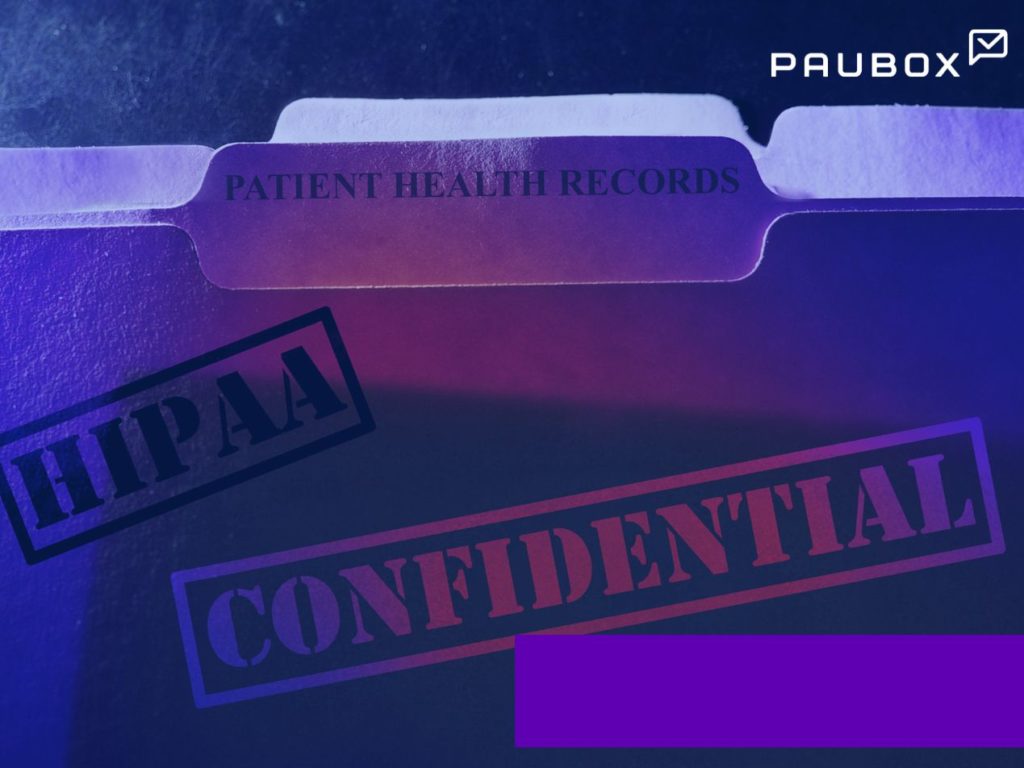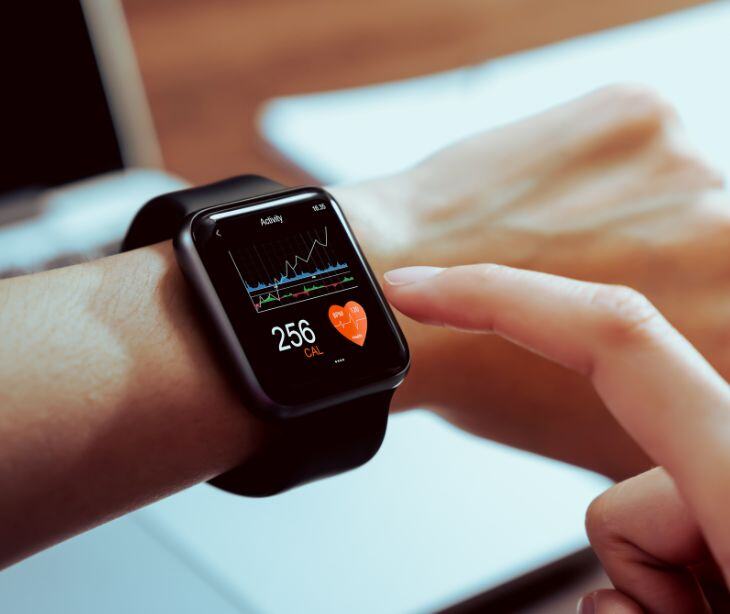4 min read
HIPAA compliance when communicating with patients with disabilities
Kirsten Peremore
March 29, 2024

There are 42.5 million Americans with disabilities who need the oppurtunity to actively to engage in their treatment. To ensure that individuals with disabilities receive proper care, organizations must comply with both HIPAA and the Americans with Disabilities Act (ADA). This approach helps to maintain continuity of care and improve coordination of internal support services.
The challenges of sharing data with patients with disabilities
"Communicating with patients who have intellectual disability was especially challenging, and several participants struggled with determining when it was necessary to have a caretaker involved in communication. Patients with intellectual disability report feeling excluded from dialogue about their care and that physicians de-emphasize the decision-making ability of the patient. A survey of 440 internists suggested that they experience discomfort in treating patients with intellectual disability, and they often doubt the ability of such patients to make health care decisions."
The above quote comes from a Journal of General Internal Medicine study that discussed the challenges and responsibilities faced when treating patients with disabilities. Such patients may face barriers in accessing and understanding their own health information due to communication or cognitive impairments.
They may require alternative formats, assistive technologies, or the involvement of support persons to comprehend and engage with their health data effectively. Failure to address these challenges can result in limited access to critical information, reduced participation in decision-making, and compromised healthcare outcomes for individuals with disabilities.
Considerations should be made for individuals with disabilities when using and sharing their data to uphold their rights to privacy, autonomy, and equal access to healthcare. Individuals with disabilities may already experience societal barriers and discrimination, and their health information must be handled in a manner that respects their privacy and confidentiality. Implementing appropriate security measures to safeguard their data, ensure proper consent and authorization processes, and provide accessible communication channels that meet their unique needs.
Legislation
HIPAA
Although HIPAA primarily focuses on the privacy and security of PHI, it also has provisions that require healthcare providers to ensure the accessibility and confidentiality of communication with patients with disabilities. This includes providing appropriate accommodations and safeguards when transmitting PHI to accommodate the specific needs of patients with disabilities.
Related: A guide to HIPAA's rules
Americans with Disabilities Act (ADA)
The ADA prohibits discrimination against individuals with disabilities in various areas, including communication. It requires healthcare providers to make reasonable accommodations to ensure effective communication with patients with disabilities, such as providing auxiliary aids and services.
- Title II of the ADA: Title II of the ADA applies to state and local government entities, including public hospitals and clinics. It requires effective communication with individuals who have disabilities, including the provision of auxiliary aids and services.
- Title III of the ADA: Title III of the ADA applies to places of public accommodation, including private healthcare providers. It mandates accessible communication and the provision of auxiliary aids and services for effective communication with patients with disabilities.
Rehabilitation Act
Section 504 of the Rehabilitation Act prohibits discrimination based on disability in programs or activities receiving federal funding. Healthcare providers that receive federal funding must provide equal access to communication for patients with disabilities, including providing necessary aids and services.
Methods of accommodating disabled patients when Sharing PHI
HIPAA compliant communication with individuals with disabilities can involve various methods and strategies tailored to specific disabilities. Many disabilities need to be catered for, but here are examples of methods employed.
Visual impairment
- Providing communication in alternative formats: Offer written materials in large print, Braille, or electronic formats compatible with screen readers.
- Audio descriptions: Use verbal descriptions to accompany visual information, such as images or diagrams.
- Accessible websites and online portals: Ensure websites and online platforms are compatible with screen readers and provide accessible navigation options.
Hearing impairment
- Sign language interpreters: Arrange for qualified sign language interpreters during in-person consultations or use video remote interpreting (VRI) for remote interactions.
- Captioning and transcripts: Provide real-time captioning services or transcripts for videos, webinars, or recorded materials.
- Visual aids and written communication: Utilize visual aids, written instructions, or communication boards to enhance understanding.
Speech impairment
- Augmentative and Alternative Communication (AAC) devices: Implement AAC devices, such as text-to-speech software or picture-based communication tools, to facilitate effective communication.
- Written communication: Utilize written notes, charts, or electronic devices to exchange information.
Cognitive or intellectual disabilities
- Simple language and visual aids: Use plain language, visual cues, or simplified instructions to enhance comprehension.
- Support persons: Allow a trusted caregiver or support person to assist in understanding and communication.
- Additional time and repetition: Provide extra time during appointments or repeat information as necessary to ensure understanding.
Mobility impairment
- Assistive technology: Employ accessible communication tools, such as adaptive keyboards, touchscreens, or voice recognition software, to facilitate interaction.
- Telehealth options: Offer telehealth services to minimize physical barriers and provide convenient access to healthcare.
Methods of HIPAA compliant communication
- Secure messaging platforms: Utilizing HIPAA compliant messaging platforms that encrypt messages, require user authentication, and provide audit logs for tracking communication.
- HIPAA compliant email: The use of HIPAA compliant email services that protect the content of messages and attachments from unauthorized access. Encryption ensures that only the intended recipients can decrypt and access the information. Email is particularly effective for patients who use screen readers or are hearing impaired.
- Virtual private networks (VPNs): Establishing secure VPN connections when transmitting patient information across public networks. VPNs create an encrypted tunnel between the sender and recipient, protecting data from interception and unauthorized access.
- Fax with appropriate safeguards: While faxing is considered a less secure method, it can still be used with additional precautions. Use dedicated fax machines or electronic fax services with measures such as password protection and confirmation of receipt to ensure confidentiality.
- Teleconferencing and video conferencing: Using HIPAA compliant teleconferencing and video conferencing platforms that provide end-to-end encryption and user authentication. These platforms enable secure remote consultations while protecting patient privacy. Video is helpful for patients who communicate with sign language.
- Physical safeguards: In cases where in-person communication is necessary, ensure that physical safeguards are in place. This includes using private meeting rooms, speaking discreetly, and avoiding discussing sensitive patient information in public areas.
Related: HIPAA compliant email best practices
HIPAA compliant email as a solution
Email is a useful tool for communicating with patients with various disabilities because it can be adapted to their unique needs. For patients who are deaf or hard of hearing, email eliminates the barriers posed by phone conversations by providing a clear, written form of communication that can be reviewed at their own pace.
Emails can be made accessible for those with visual impairments by using screen readers, large fonts, and high-contrast text, ensuring that information is easily consumable. For patients with intellectual disabilities, email content can be simplified and structured in a way that is straightforward to understand.
Related: HIPAA compliant email best practices
FAQs
What role do family members or caregivers play in patient provider communication?
Family members or caregivers often act as intermediaries to convey information between provider and the patient.
How can healthcare organizations monitor and improve their communication strategies with patients with disabilities?
Healthcare organizations can use patient feedback, accessibility audits, and staff training programs.
What resources are available to healthcare providers unsure about their obligations under HIPAA when communicating with patients with disabilities?
Healthcare providers can access resources from the US Department of Health and Human Services, consult with healthcare law experts, and utilize guidelines from disability advocacy organizations.
Subscribe to Paubox Weekly
Every Friday we'll bring you the most important news from Paubox. Our aim is to make you smarter, faster.




